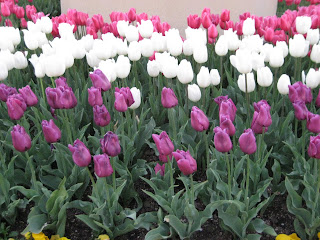
From the first strains of the title song over the opening credits, BLUES IN THE NIGHT establishes terrific mood. Although the story about a struggling band isn't quite sure if it wants to be a musical or a film noir, it's very engrossing, if not entirely successful. As critic
Stephen Scheuer wrote in his 3-star review, "With a little more work this could have been a great motion picture." While it doesn't quite fire on all cylinders, there is much in the film to appreciate.
The bandleader and pianist is played by future director
Richard Whorf. Another better-known future director,
Elia Kazan, is the group's clarinet player. Jack Carson and Priscilla Lane play a married couple who are the trumpeter and vocalist, while Billy Halop and Peter Whitney are the drummer and bass player.
The band criss-crosses the country in search of their big break, until the fateful night a crook (Lloyd Nolan) hops into their boxcar. He takes a liking to the band and sets them up with a steady gig in a roadhouse he owns. The roadhouse is filled with strange characters, played by Howard DaSilva, Wallace Ford, and Betty Field, who is Trouble with a capital T.
The movie loses focus when it spends time on the denizens of the roadhouse. The band members have enough problems of their own to have made an interesting movie, without bringing in gangsters. I would have liked to see more time invested in Priscilla Lane's character, who's worried she's going to lose her devil-may-care man when he finds out she's in the family way; she also seems more than a little stuck on the bandleader. Betty Field's temptress was somewhat extraneous to the proceedings; I had trouble believing Whorf was tormented with attraction for such an unappealing character.
The title song is wonderfully performed by
William Gillespie in a jailhouse scene early on in the film. (It dawned on me partway through the scene that the jail cells were segregated, one of those "time capsule" moments that is disturbing viewed from today's vantage point.) Gillespie also sang in the "Grand Old Flag" number in YANKEE DOODLE DANDY and performed the role of Porgy in the George Gershwin bio RHAPSODY IN BLUE.
"Blues in the Night" is woven throughout the film's soundtrack. The final scene, as the band plays it once more as their boxcar pulls away into the night, is pure movie magic. It's hard to believe Mercer and Arlen's classic didn't win the Oscar for Best Song, until you look at the other
nominees that year, which included "Chattanooga Choo Choo," "Boogie Woogie Bugle Boy," and the winner, "The Last Time I Saw Paris."
BLUES IN THE NIGHT was directed by
Anatole Litvak. The black and white cinematography is by
Ernest Haller, who also filmed GONE WITH THE WIND. The montage sequences were created by future director
Don Siegel. The movie runs 88 minutes.
This movie would be perfect on a double bill with
THE MAN I LOVE, another noirish Warner Bros. musical that was a bit muddled but fascinating.
BLUES IN THE NIGHT can be seen on
TCM. The trailer is
here. You can also check out the TCM
introduction to the film.
All in all, the film's a little too heavy on the bad guys and a little too light on the music and fully fleshing out the band members, but still, it's got some great moments scattered throughout which make it very much worth watching. It'll stick with you after the end credits roll.
March 26 Update: Great news! According to
The Digital Bits, BLUES IN THE NIGHT will be released on DVD on July 22, 2008. Another jazz-related movie, PETE KELLY'S BLUES, will be released on the same date.


































